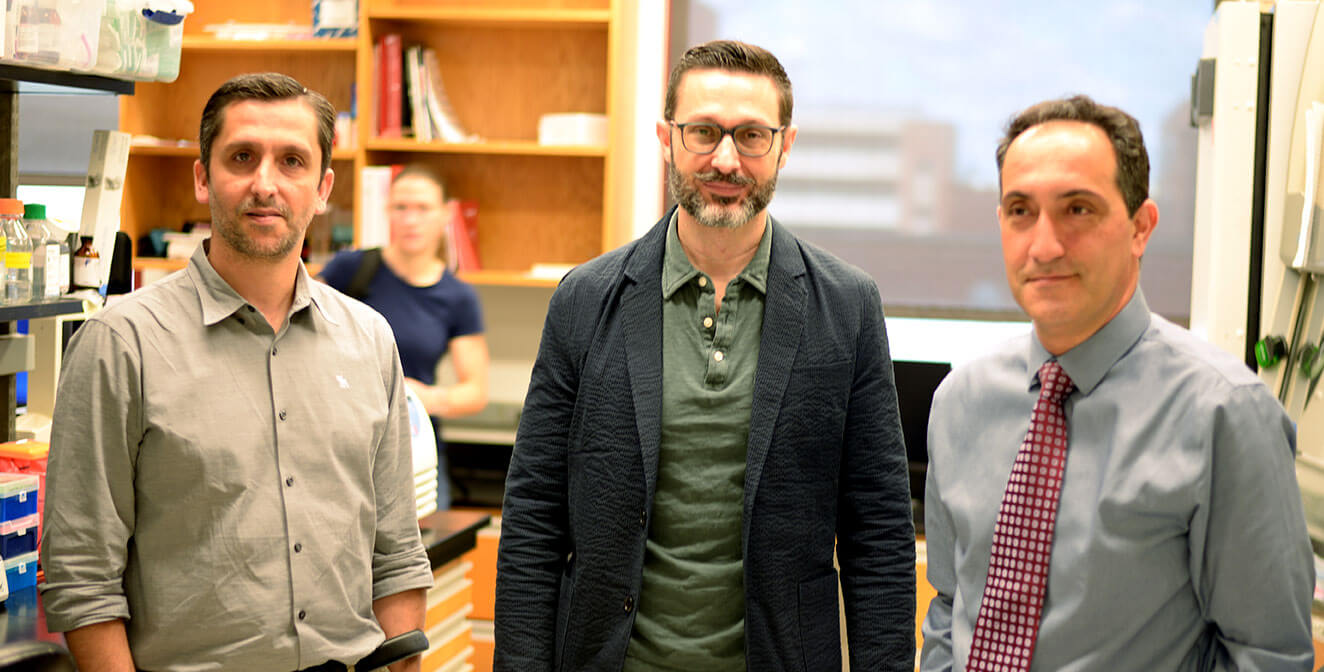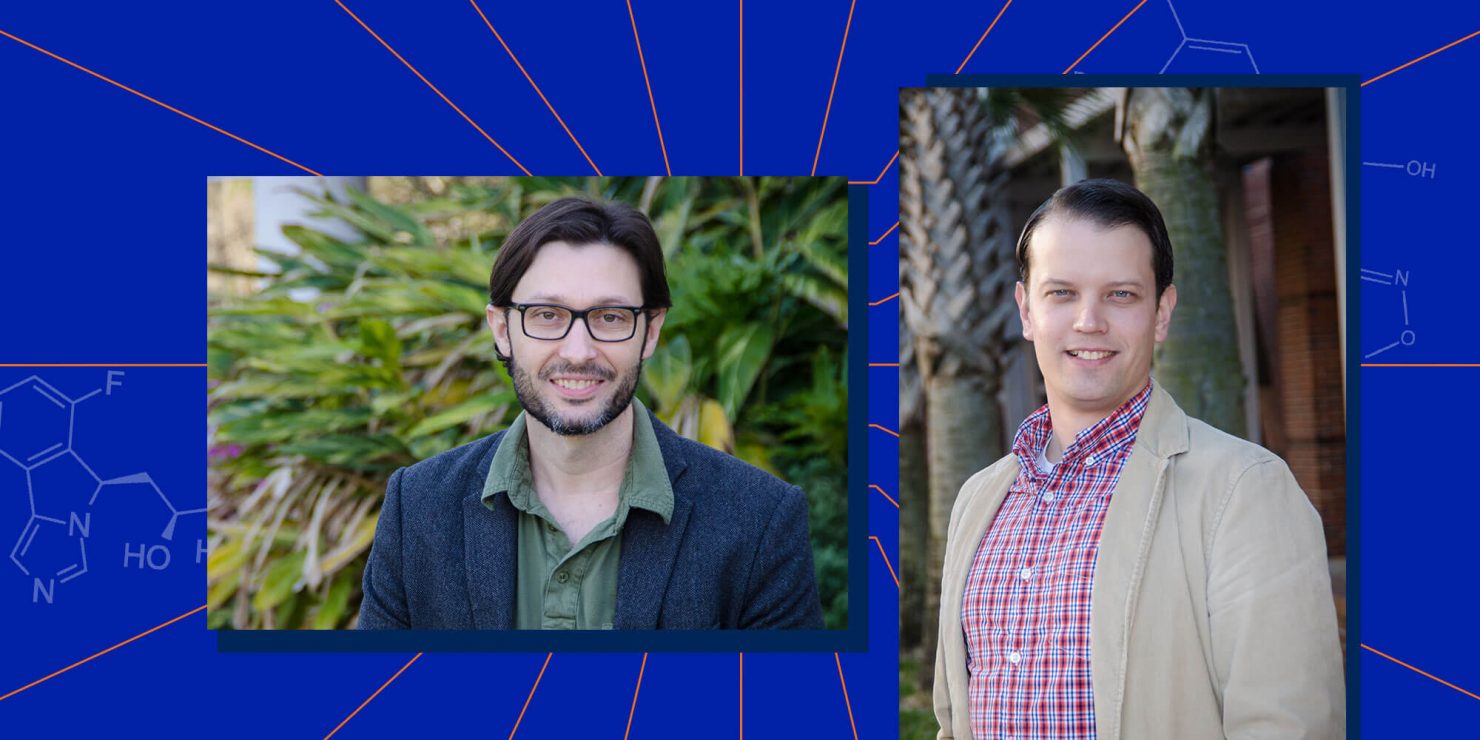Ben Keselowsky, Ph.D., a professor in the J. Crayton Pruitt Family Department of Biomedical Engineering at the Herbert Wertheim College of Engineering at UF, and Ali Zarrinpar, M.D., Ph.D., an associate professor in the Department of Surgery in the UF College of Medicine, are leading a three-year, $2.6M R01 project funded by the National Institute of Diabetes and Digestive and Kidney Diseases (NIDDK) that will further develop a novel enzyme-based therapeutic that has shown early promise in the treatment of liver ischemia-reperfusion injury (IRI).
This biomedical breakthrough holds particular significance to the NIDDK, which promotes basic research related to digestive diseases, kidney disease, diabetes, and liver, pancreas and small bowel health.
Many injuries and surgical interventions result in IRI — a period of inadequate tissue/organ blood supply followed by the reintroduction of the blood flow (reperfusion), which causes local inflammation, cell death, excessive tissue destruction and possible organ failure. These include organ transplantation.
“This injury gives a hit to that organ which weakens it and sets it up for more severe rejection episodes,” said project co-investigator Sergio Duarte, Ph.D., a research assistant professor with the Department of Surgery at the UF College of Medicine. The UCLA-trained transplant immunobiologist said, “If we can minimize that reperfusion injury, we give it a better chance against rejection.”
Working alongside co-investigator Greg Hudalla, Ph.D., an associate professor in the J. Crayton Pruitt Family Department of Biomedical Engineering, Dr. Keselowsky constructed the new therapeutic — an approach to direct immune cell metabolism using the inflammation suppressing enzyme indoleamine 2,3-dioxygenase (IDO).

From left: Sergio Duarte, Ph.D., research assistant professor with the Department of Surgery at the UF College of Medicine; Ben Keselowsky, Ph.D., professor, J. Crayton Pruitt Family Department of Biomedical Engineering; and Ali Zarrinpar, M.D., Ph.D., associate professor in the Department of Surgery in the UF College of Medicine
“Greg and I had been investigating variants of IDO proteins on separate tracks,” Dr. Keselowsky said. “We were fortunate to connect with Ali and Sergio to focus on this critical problem.”
Dr. Keselowsky explained how the true innovation is in delivering these enzymes in a way that directs cell metabolism, as they hold the promise of resetting the immune system back to a normal, less activated state. Inflammation is sometimes a necessary byproduct of tissue damage. But many diseases get stuck in a state of chronic inflammation, requiring lifelong immune suppressive treatments.
“Immunosuppressive drugs typically either completely shut down the cells that are making inflammatory molecules or just target those molecules without correcting the cells,” Dr. Keselowsky said. “Those can shut down inflammation and immune cells, which you need to control certain diseases, but they can cause major problems such as increased chance of infections or endocrine problems, particularly in cases where long-term treatment is needed. Our approach modifies the immune cells so that they stop making the inflammatory signals by directing cell metabolism. We envision this as a whole new class of anti-inflammatory — a circulating enzyme that we deliver for immune metabolism regulation. We conceived that, if we could condition livers that were going to be transplanted against injury from perfusion, we’d have a better shot at a successful liver transplant.”
The research findings portend a potential solution to combat IRI, for which there are no current treatments.
The grant will also support identifying the ‘therapeutic window’ of the enzyme, finding both the minimum effective dosage and a maximum that precludes toxicity, which is key to finding a range that allows the team to find suitable candidates for courting FDA trials.
“Another question we hope to answer in this project is one of timing: ‘When is the optimal moment to give this to the patient?’” Dr. Zarrinpar said. “Should it be preemptive? Last-minute? And of primary academic interest is ‘How exactly does it alter the immune system?’”
It’s a dialogue the interdisciplinary collaborators find easy to sustain by virtue of their favorable geography.
“Being at an academic medical center is one thing; but having a building that is connected to you, where cutting-edge engineering and medicine interact seamlessly, is something special,” Dr. Zarrinpar said.
“I’m beyond excited to be an engineer working with a scientist-clinician and a biomedical scientist in this transplant space, which is yielding this very promising application,” Dr. Keselowsky said. “We are one of the rare universities that have these cutting-edge centers co-located in such strategic proximity.”
